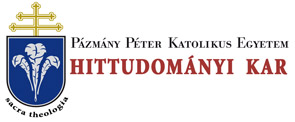Folia Canonica 11. (2008)
STUDIES - George D. Gallaro: Oikonomia and Marriage Dissolution in the Christian East
110 GEORGE D. GALLARO In this connection we must not forget that, according to the teaching of the Seventh Ecumenical Council, the icon always entails the presence of the reality, or in other words the icon is a manner whereby reality makes itself present. Therefore the sacrament of marriage for the Greek Fathers is the living and true image of the Incarnation. Hence from it derive its absolute unity, its indissolubility and its monogamous nature. We may say that in the Christian East the doctrine of marriage evolved alongside the doctrine of Incarnation. However, while this is the ideal, life in its daily practice has to face many problems: should there be some tolerance for the weak and the imperfect or a most strict intransigence should prevail? This apparently divergent assessment within the Church, the mystical theologians on one hand and the high-minded shepherds on the other, should not surprise us. While the former were intransigent, the latter seemed more large-hearted and magnanimous. The Apologist Athenagoras (2nd cent.) calls a second marriage “a decent/ fair-seeming adultery.”31 The great mystical theologian, Gregory of Nazianzus, is more or less of the same opinion. Although respecting the canonical legislation of his times he writes: “If there were two Christs, we could admit two bridegrooms and two brides; but since Christ is one, and indeed one the head of the Church, there can be but one flesh; the second marriage is to be rejected. And if St. Paul condemns a second marriage, what must we think of a third? The first marriage is law; the second is tolerated; the third is a crime. To go beyond that is a practice fit for pigs, so much so that few examples of such disorders can be found.”32 On the other hand, St. Basil was a great shepherd, hence more tolerant. He does not oppose second marriages, but applies to them the canonical discipline to show that it is a question of economy, not of Christian perfection. Long before the great Fathers from Cappadocia, the second and even the third marriage were tolerated in the Christian East. In order to reaffirm their exact interpretation in the context of economy, a canonical legislation had already been formulated. For instance, a second marriage was forbidden to the clergy, not simply in the sense that a widowed clergyman could not remarry (and the widow of a clergyman equally could not remarry), since this would be obvious, given the fact that marriage is forbidden to an ordained deacon and beyond, but a lay person who has married twice is also forbidden to accede to the sacred orders. The seventeenth apostolic canon states: “Whoever, after baptism, has married twice, or has had a concubine, cannot become bishop, priest or deacon, or at any event be part of the clergy.”33 St. Basil is aware of such a canon because in his own twelfth canon he simply states: “The canon 31 ATHENAGORAS, Embassy for the Christians,]. Crehan (transi, by), Westminster 1956, 74ff. & 165ff. Also see G. Joyce, Christian Marriage, London 1948, 591ff. 32 Grégoire DE Nazianze, Discours 32-37, C. Moreschini (par), Paris 1985, SC 318: 287£F. 33 Percival, op. cit. and DiBerardinO, op. cit.
